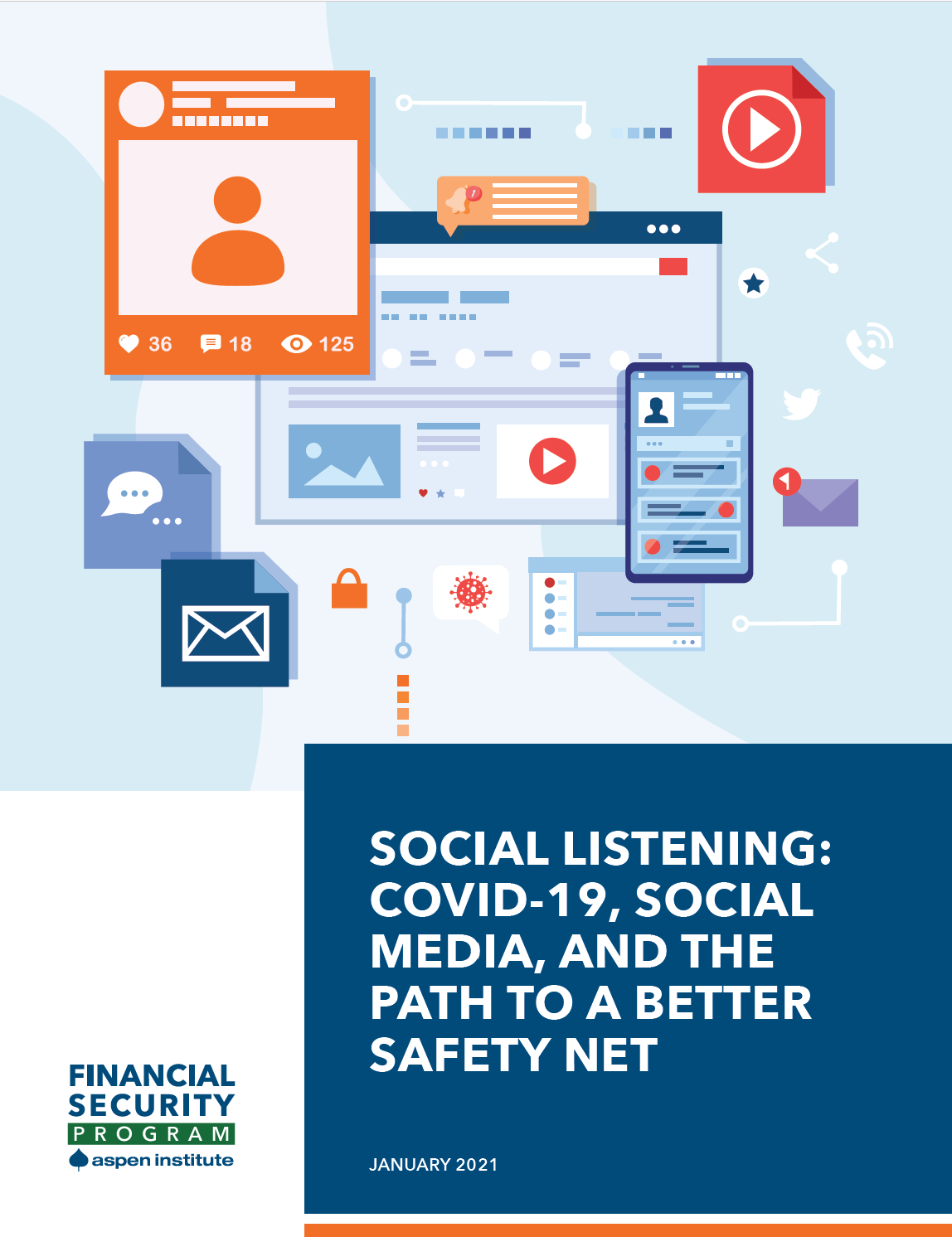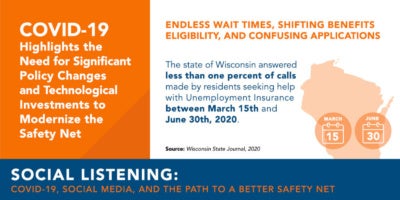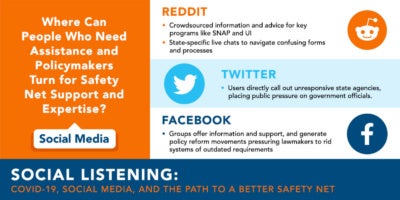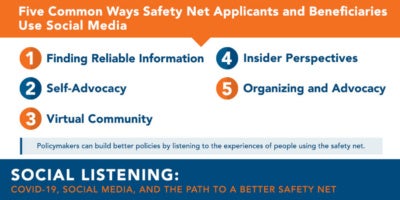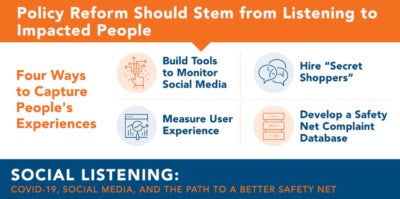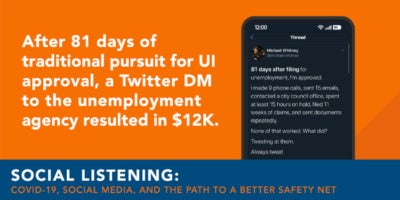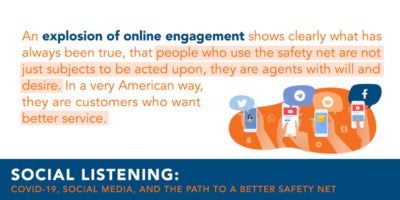Early in the pandemic, the number of people applying for unemployment insurance (UI) skyrocketed around the country – from 200,000 to over 6 million within the month of March alone. America’s fragmented public benefits systems already struggled with clarity and accessibility, and the COVID-19 pandemic brought these long simmering issues to full boil.
When systems delivering public benefits became overwhelmed or unresponsive, people turned to Reddit, Twitter, Facebook and other social media platforms in order to understand complex applications, share resource for obtaining benefits, and develop policy solutions. State, local, and federal policymakers can learn from this experience—frustrated users of public systems are creating roadmaps to help them improve government services.
The Aspen Financial Security Program identified five reoccurring trends of platform usage by people in relation to safety net programs and four techniques for capturing people’s experiences in order to reform the safety net. Read Social Listening: COVID-19, Social Media, and the Path to a Better Safety Net and learn how the government can use widespread social media feedback and begin to build long-term measures to center people’s experience as an important component of policy design
Key Findings:
This paper was also developed as part of the Global Inclusive Growth Partnership, a collaboration between the Aspen Institute and the Mastercard Center for Inclusive Growth.
